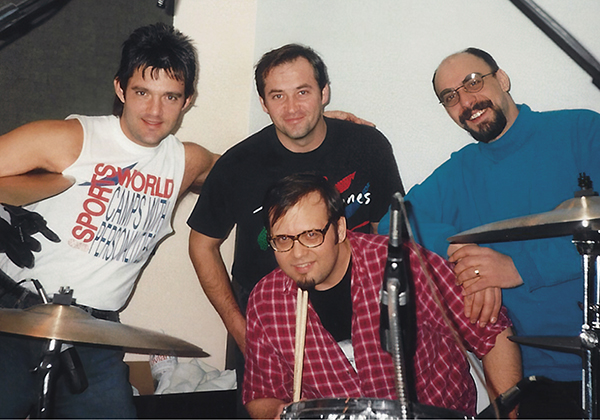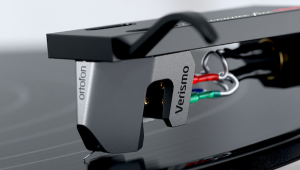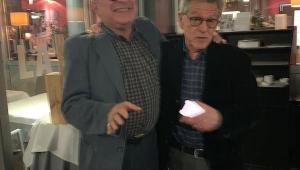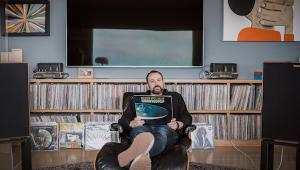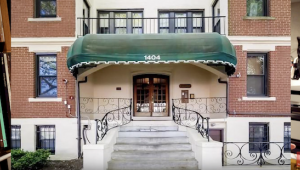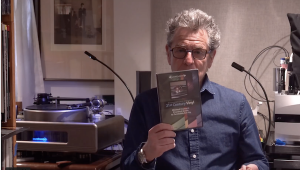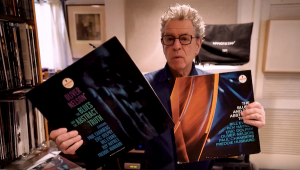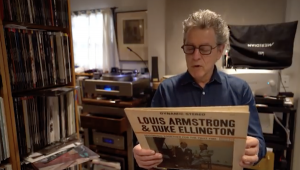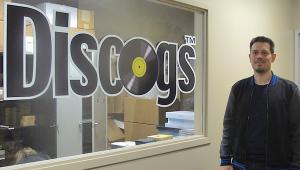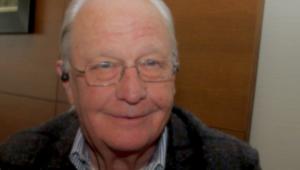Now That Christmas With The Smithereens Is Available on Limited-Edition Green Vinyl, Drummer Dennis Diken’s Wish, Especially for You, Is to Have the Band’s Vaults Open Up to Bring Us Even More LP Gifts Sometime After the Holidays

All I want for Christmas is . . . more vinyl. Just ask Smithereens drummer Dennis Diken, who got his first real taste for wax during Christmas 1962, when he received a literal cavalcade of 45s under the tree.
But before we dive into that truly special holly-jolly time, it’s well worth noting that it’s been quite the fertile period for The Smithereens of late. To wit: Back on September 23, the band released The Lost Album via Sunset Blvd. Records, though it remains a CD-only offering for now — at least for the time being. That being said, vinyl is most definitely in the offing.
“These are recordings we created in 1993,” confirms Diken. “We’re going through our archives now, and there’s a lot of material we’re going to be issuing. This Lost Album was probably the most cohesive batch of songs that we felt hung together — but I’m telling you now, there’s a good mountain of stuff in the archives that’s gonna be coming out. We couldn’t get the vinyl out for The Lost Album when we wanted to, so we went with the CD for starters. But, yeah, given how well it’s already being received, it looks like it’s warranted for us to do it on vinyl.”
That’s very good news to hear, especially for those of us who’ve been spinning Smithereens music on vinyl since the beginning, starting with the October 1980 Girl About Town EP (D-Tone Records), the June 1983 Beauty and Sadness EP (Little Ricky Records), and their first full-lengther, July 1986’s Especially for You (Enigma Records) — two EPs and an album, I must admit, I’ve had to replace with fresh copies over the ensuing years, and not long after they got their initial major label distribution deal with Capitol Records for March 1988’s Green Thoughts (the latter of which I only have one LP copy of, at least at the present time).
If you’re craving new Smithereens vinyl during the holiday season, then I have even more good news for you, as Sunset Blvd. recently released the four-man, New Jersey-bred band’s October 2007 holiday-themed album Christmas With The Smithereens on vinyl for the very first time, in limited-edition 140g 1LP form — i.e., it’s capped at 1,000 copies, and it’s on green vinyl to boot. I bought my own copy as soon as the LP came out on November 18, and if you’re so inclined, you can go here to get yours too, for $28.99.
Christmas With The Smithereens is a fine, 12-track holiday blend of Smithereens originals like “Waking Up on Christmas Morning” and “Christmas Time All Over the World” alongside their covers of stone-cold, ho-ho-ho rockin’ classics like The Beatles’ “Christmas Time Is Here Again,” the Ramones’ “Merry Christmas (I Don’t Want to Fight Tonight),” and The Who’s “Christmas.”
The pressings stats for Christmas With The Smithereens are these: the vinyl is pressed at Studio 4 Vinyl in Nottingham, Pennsylvania. Kurt Reil did the vinyl mastering, and Jeff Powell at Take Out Vinyl did the lacquer/acetate cutting.
Following the untimely passing of Smithereens frontman and chief songwriter Pat DiNizio five years ago in December 2017, The Smithereens have, of late — with their fanbase’s blessing — continued to perform as a live unit, with Marshall Crenshaw and Robin Wilson (of Gin Blossoms fame) alternately fronting them. Diken verifies a new album with both singers involved is now in the works. “We’re excited about that. Like everything else, it’s just a matter of timing. We’ll get it done,” he asserts, before adding, “I still like vinyl. I don’t get to play as much as I used to, but I still love it, you know? And I have a lot of it!” (So do we, Dennis. So do we.)
Diken, 65, and I got on Zoom together last month from NY to NJ to discuss all those special 45s he got as a wee lad for Christmas back in 1962, the fine art of album sequencing, and why having Smithereens music on vinyl remains vitally important to the band’s legacy. Waking up on Christmas morning / I always feel there’s magic in the air. . .
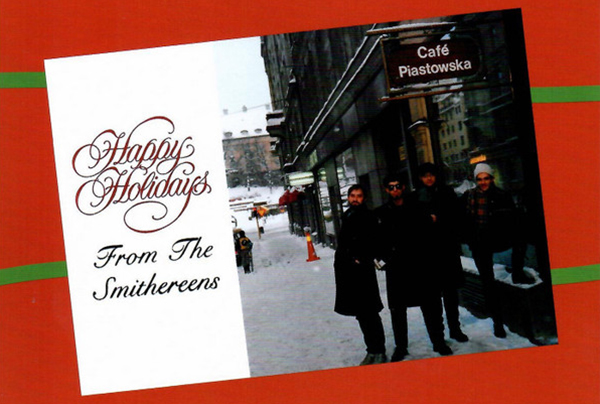
Mike Mettler: I feel like your audience is especially primed to want to buy The Smithereens on vinyl because many of us started listening to you guys that way in the early days on indies like Enigma, then on Capitol, and just a limited amount on RCA, but there’s a period of time where we don’t have vinyl for everything you put out back then.
Dennis Diken: True. Yeah, let’s see, we don’t have vinyl on God Save The Smithereens [released on CD in October 1999 by Velvel/KOCH]. There is vinyl — although it’s an alternate version — of our [April 1994] RCA album A Date With The Smithereens. It never came out as a 12-inch, but there was a box set of 7-inch EPs, and those were alternate mixes [on four 45s]. So I guess you can say, in a way, that album has not come out, as such, as an LP on vinyl.
Mettler: Well, I’d say that’s more for The Smithereens vaults to unleash on us on vinyl at some point. I also think it’s fair to say your audience is hungry to spin those records on a turntable, whenever you get to release them that way.
Diken: And who would’ve thought, right? Who would’ve thought, 20, 30 years ago, that this would’ve been the case? I’m very happy about it. And then I hear cassettes are making a comeback too.
Mettler: Yeah. That’s a tough one for me, because cassettes seem more like a nostalgic and/or a collectible kind of thing, rather than a playback-quality-appreciation thing. Putting the needle on a record is a much better listening experience, especially for new and younger listeners.
Diken: I think that’s probably true. I think it’s great if younger listeners have their antenna open to that kind of thing.
Mettler: Agreed. Well, let’s jog the DD memory banks. What was the first 45 and/or vinyl record you got as a kid? What was the first thing you got?
Diken: Oh, first, I had my slew of “kiddie records,” though those were hand-me-downs. But the first rock & roll records I had were all gotten during the Christmas of 1962. “Return to Sender,” Elvis Presley [on RCA]. “Bobby’s Girl,” by Marcie Blane [on Seville]. “Big Girls Don’t Cry,” The 4 Seasons [on Vee Jay]. “Wiggle Wobble” by Les Cooper and The Soul Rockers [on Everlast], and “Don’t Hang Up,” by The Orlans [on Karusell]. Those are the first 45s I got.
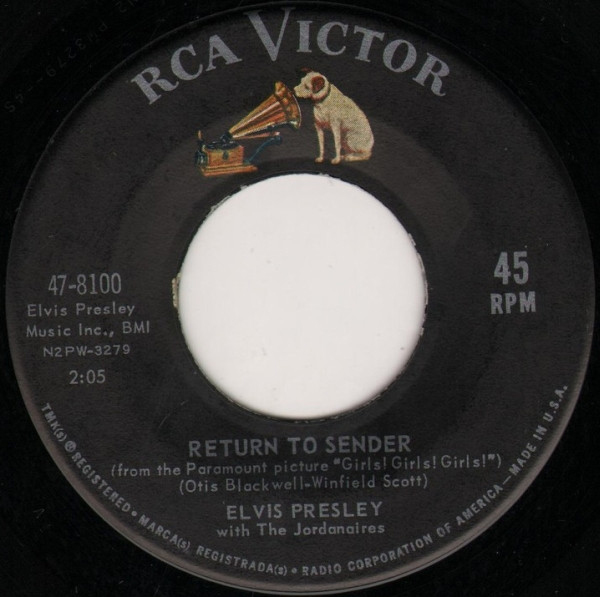
Mettler: Wow, that’s not a bad haul to start with. Santa sure treated you right that Christmas. You must still have those 45s, right? You gotta have them.
Diken: Yeah, I think I have a few of the originals. You know, when I was a kid, I used to trade records a lot. If I ended up getting an LP that contained the same song on it I had as a single, I would often trade with my friends or my cousins.
But I do know I have one or two of those originals. Definitely “Return to Sender” — I know I have my original on that. Subsequently, I got other copies of the ones I might have swapped out, or whatever. But, yeah — I held onto a lot of vinyl, Mike! (laughs)
Mettler: Me too, Dennis! (laughs) What was the first Beatles record you got your hands on? What was the very first one?
Diken: “I Want to Hold Your Hand,” right when it came out [in 1963, on Parlophone]. And I remember, very vividly, going to the record store in Passaic, New Jersey, with my mom. Prior to that moment, I had heard The Beatles on the radio, but I had not seen a photo of them. It’s hard to believe, right? Nowadays, when you pick up your phone, it’s, “I just read an article about this certain actor, but I’m not sure if I’m thinking of the right one. I’ll just dial it up.”
Back then — and this is before [The Beatles’ February 9, 1964 appearance on] The Ed Sullivan Show — there was just no print [image] of them. But the records were all over the radio, and I was really crazy for them. I remember walking up to the shop, and back then, they would Scotch-tape the Top 20 45s in the glass window — the top-charting records. You remember that?
Mettler: Yeah. Yeah, I do. Some shops still do that. You could see ’em get all yellowed over time, depending on how often you visited that shop.
Diken: Yeah! So, we walk up to the store, and there it was — the “I Want to Hold Your Hand” picture sleeve — and I froze in my tracks. I’ll never forget that sensation — that feeling of seeing a photo of The Beatles for the first time.
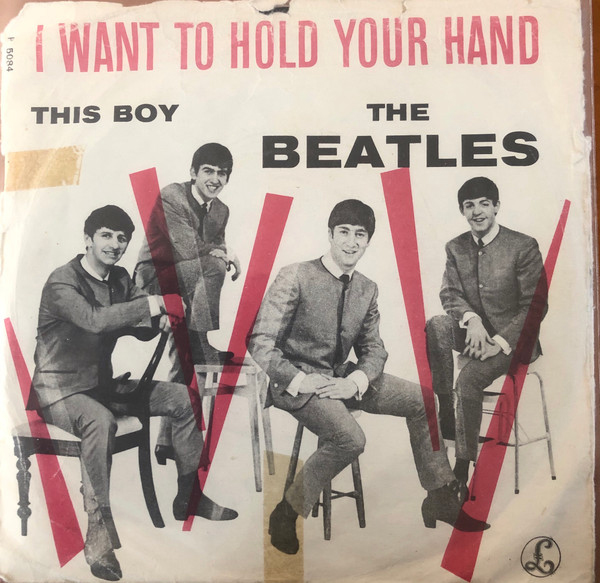
But, funnily enough, we didn’t buy “I Wanna Hold Your Hand” that day. I was going there with the express desire of picking up “Forget Him,” by Bobby Rydell [on Cameo Parkway] — which we got on that particular day. And then about a week or two later, we got “I Want to Hold Your Hand.”
Mettler: What were those 45s going for at that point? Was that the 99 cents era, or was it less than that?
Diken: It typically ranged between 69 cents and 99 cents. I think 99 was on the high side. Most discount stores like Two Guys, S. Klein, and Korvettes, I think they were more like 69 or 79 cents. And supermarkets too. Some supermarkets had a small record selection, and I think they were typically 69 cents. I’m sure it was just a loss-leader, you know?
Mettler: Yeah. There was a debate recently in one of our Comments sections, where some people felt 99 cents was on the high side at the time we were referencing, and it appears they were right. [Scroll down into the Comments section following this interview feature to follow that discussion, if you so wish.]
Either way, my feeling was, as a buyer of 45s in the ’70s when the price was maybe starting to get a little higher than 99 cents, if I’m buying two or three singles from the same artist, I might as well buy the album at that point.
Diken: True, yeah. Especially if you found a good sale on LPs back then — which happened every week. I know Korvettes and S. Klein department stores, they would run ads in the Sunday papers, and I guess they would have deals with the labels. One week, one store would have every Warner/Elektra/Atlantic album where they would knock a buck off — or the following week, it would be Capitol. So I would scour the papers every Sunday — and plan my purchases accordingly.
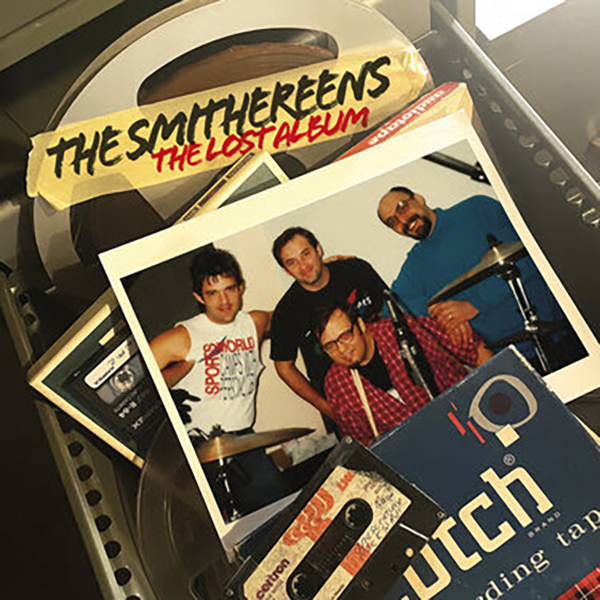
Mettler: Those were the days! Well, I do look forward to getting The Lost Album on vinyl at some point, like you mentioned earlier. For one thing, a song like “Face the World With Pride” sounds like it could have come out in 1966. It also has that analog-playback, middle-of-Side-2 kind of feel to me.
Diken: Maybe we should put our heads together and our resources together, and go into the pressing business and open up a new plant, you know?
Mettler: There are some great plants out there for sure, but we could sure use some more of them.
Diken: It’s funny. I’ve read some books recently, one about King Records out of Cincinnati. It was one of the great independent labels. I mean, there are so many earth-shattering records that came out on the King label. And Syd Nathan, the owner [who founded the label in 1943], he had his offices and a recording studio — a really good studio — on the same premises, in addition to having his own pressing plant there too. I think maybe Leonard Chess did the same thing [with Chess Records in Chicago, the legendary blues label he and his brother founded in 1950], but I’m not sure.
Mettler: I also feel the way you sequenced those 12 Lost songs mirrors how you’d sequence a vinyl album. Is that fair to say?
Diken: Totally. Sequencing an album — that’s a real art, actually, as you well know. We just do it by feel, and we tend to go with our gut. Some people might go by keys and tempos — and certainly tempos come into it. You don’t want it to be too linear. You want to have some peaks and valleys to the feel.
You know, an interesting experiment for anybody who wanted to try this, just to see what we’re talking about. Let’s say, if you have iTunes, or Spotify, or some program where you could make your own playlist, take one of your favorite albums, dump it in there, and retool it to a different running order, and you’ll see — you’ll discover — how important sequencing is to the listening experience.
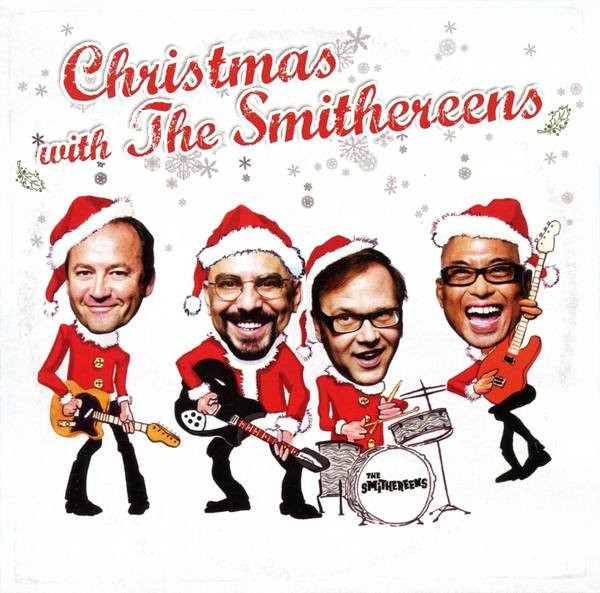
Mettler: I couldn’t agree more. Christmas With The Smithereens is an album like that for me too, now that I get to drop the needle on it after only having it on CD for all these years [since its initial release in October 2007]. Getting back to those other non-LP albums in The Smithereens catalog we were talking about before, when Pat was still with us, was there ever any discussion with him about getting that material on vinyl? Like, “Hey, we should put this one out on an LP.” Did you guys ever have a conversation about any of that? [Original Smithereens frontman, singer/songwriter Pat DiNizio, passed away in December 2017 at age 62.]
Diken: Yeah, I think we did, really. It was on the list. Like I said, we had a bunch of projects we were trying to get off the ground for a while, and I know this was something we felt was still viable, and we should do something with it. And, again, the initial reaction to what we’re doing [with the catalog releases] has been so positive that it’s very heartening, you know? It is a nice time capsule to hear Pat’s voice from back then.
Mettler: I’m glad The Smithereens continue to be a viable live entity too, with either Marshall Crenshaw or Robin Wilson singing with you guys now. I feel like no matter where you go in the country or on the continent, people want Smithereens music performed live. When you’re up there onstage, do you get that, “Oh, this is even better than I expected” kind of feeling?
Diken: We’re really fortunate that we’re able to keep doing this. It’ll be 43 years this coming March [in 2023] that we’re together. It’s really hard to fathom sometimes, but it’s true! (laughs)
I always say this — it’s really not just hype, and I’m not trying to sound corny, or anything — but we could not do this if we didn’t have a solid, devoted fanbase. We’re really lucky we do, and they’ve really stuck with us all these years. We used to play tons of colleges, and we did very well there. Those people who were attending the colleges at that time graduated and had careers; they had families. Now they’re empty-nesters, and they’re coming back to see us — and they are digging it.
We do still play like we’re teenagers. I gotta say, Jimmy [Babjak, Smithereens lead guitarist] and I always try to maintain that youthful spirit. Our audience is really loyal, and they’ve expressed to us that our music has helped them get through some tough times — and that’s rewarding.
We’re just doing our thing. We’re just doing what we always did. Jimmy and I started playing together during our freshman year in high school [at Carteret High School in Carteret, New Jersey] in 1971. I wanted to have a band in the worst way — but in grammar school, there just weren’t that many hip kids who played instruments.
I thought when I got to high school, I was gonna meet a whole bunch of new kids, and maybe I’d have a shot if I could find someone who could play “I Can’t Explain” by The Who — and then I’d have a good starting point.
The first day of school, Jimmy opens his loose-leaf notebook. He’s got color pictures of The Who plastered in there from Hit Parader magazine. I introduced myself, and we started playing together that week.
Like any great performer, you grow up loving music, and you grow up learning from your favorite records — but ultimately, you internalize all that, and it comes out in your own way. That’s what we’ve all done. We’re all self-taught, and we just learned from playing along with our favorite records.
As you grow older and grow with your playing and your technique, you just grow into a whole different means of expression — but you still maintain that connection to the sounds that kicked your butt when you were a kid.
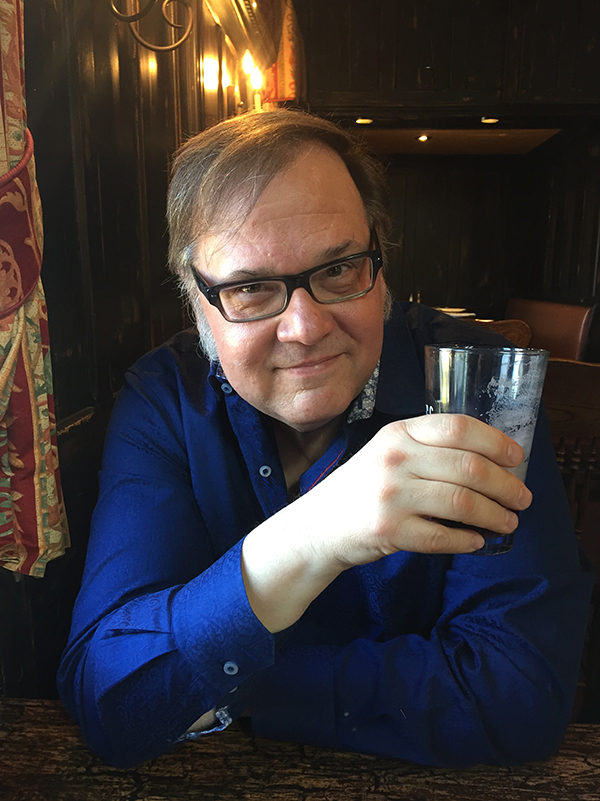
Mettler: I would agree that The Smithereens have long made a career mining that kind of connection with your music, and with your audience. Ok, to wrap things up, here’s the “MM question” — my final broad-stroke question, that is. Let’s project ourselves 50 years in the future. It’s 2072. Unless science has done something weird, I don’t think you and I will physically be on the planet then. (both chuckle) But if somebody in 2072 cues up The Smithereens to listen to, what do you want them to get out of that experience?
Diken: Whatever they want to. I think music is so subjective. For me, music has always been about how it makes you feel. And, yeah, lyrics are certainly important, and sometimes the marriage of a lyric to a certain piece of music is so undeniably perfect. That’s really blissful. But, ultimately, it’s about the end product, and what the cut sounds like, and how it makes you feel.
I think how Smithereens music would make people react is, they would recognize there’s a lot of humanity in our music. Just a very clear expression of what’s in our hearts and souls as people, as artists, and as musicians.
And I hope they’re entertained by it too — because, really, it’s about entertainment. We’re all good players, but virtuosity to me has never been the No. 1 focus. It’s about playing together. It’s about playing the song, and expressing something that’s in your heart and soul through the music. A lot of people tell us they find our stage show an as an expression of joy, and it’s very infectious to them — and they can’t help but feed off of that.
Bob Dylan was asked something like this, I think, in the ’60s. Pundits would ask him, “Your lyrics are so profound. Can you tell us what this song is about?” And he said, “It’s about anything you want it to be about. It’s what you get out of it.”
So, I do hope people would sense all those things I was just talking about when they listen to The Smithereens. I would hope, far into the future — and who knows what kind of art there will be then, and how people consume music — but I would hope they listen to us. And that they do recognize these were guys who really liked what they were doing, and believed what they were doing. It was the real deal, and it was straight from our hearts.

THE SMITHEREENS
CHRISTIMAS WITH THE SMITHEREENS
140g 1LP (Sunset Blvd. Records)
Side One
1. Waking Up On Christmas Morning
2. Santa Bring My Baby Back (To Me)
3. Merry Christmas, Baby
4. Rockin’ Around The Christmas Tree
5. Christmas Time All Over The World
6. Christmas
7. ’Twas The Night Before Christmas
Side Two
1. Run Rudolph Run
2. Merry Christmas (I Don’t Want To Fight Tonight)
3. Christmas (I Remember)
4. Auld Lang Syne
5. Christmas Time Is Here Again
